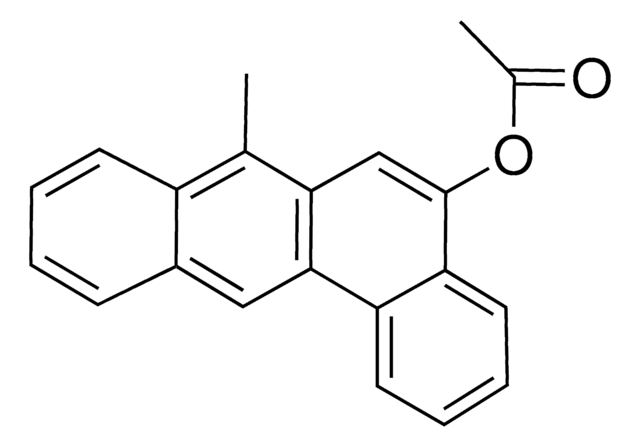Wichtige Dokumente
776181
3-(2-Acetoxy-4,6-dimethylphenyl)-3-methylbutyric acid N-succinimidyl ester
95%
Synonym(e):
3-(2-Acetoxy-4,6-dimethylphenyl)-3-methylbutyric acid N-hydroxysuccinimide ester, Trimethyl lock NHS, Trimethyl lock succinimidyl ester
About This Item
Empfohlene Produkte
Qualitätsniveau
Assay
95%
Form
solid
mp (Schmelzpunkt)
107-112 °C
Lagertemp.
2-8°C
SMILES String
CC(=O)Oc1cc(C)cc(C)c1C(C)(C)CC(=O)ON2C(=O)CCC2=O
InChI
1S/C19H23NO6/c1-11-8-12(2)18(14(9-11)25-13(3)21)19(4,5)10-17(24)26-20-15(22)6-7-16(20)23/h8-9H,6-7,10H2,1-5H3
InChIKey
KMNOKEFBKJGRFL-UHFFFAOYSA-N
Verwandte Kategorien
Anwendung
Hier finden Sie alle aktuellen Versionen:
Analysenzertifikate (COA)
Die passende Version wird nicht angezeigt?
Wenn Sie eine bestimmte Version benötigen, können Sie anhand der Lot- oder Chargennummer nach einem spezifischen Zertifikat suchen.
Besitzen Sie dieses Produkt bereits?
In der Dokumentenbibliothek finden Sie die Dokumentation zu den Produkten, die Sie kürzlich erworben haben.
Unser Team von Wissenschaftlern verfügt über Erfahrung in allen Forschungsbereichen einschließlich Life Science, Materialwissenschaften, chemischer Synthese, Chromatographie, Analytik und vielen mehr..
Setzen Sie sich mit dem technischen Dienst in Verbindung.
